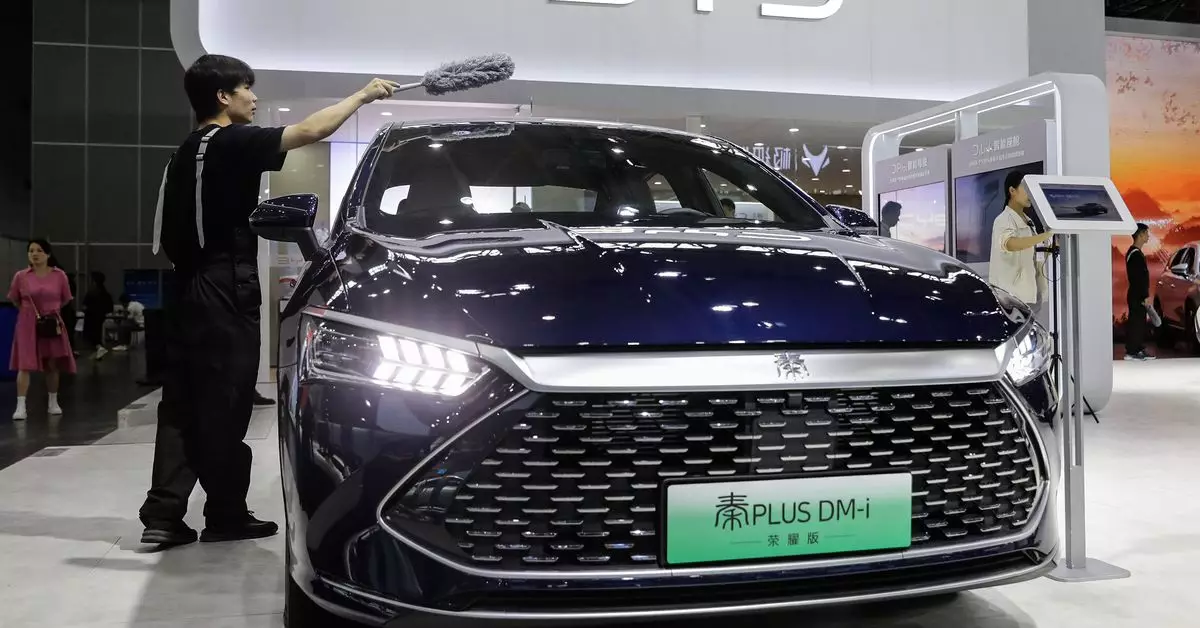The Biden administration’s recent proposal to impose restrictions on connected vehicle software from certain “countries of concern,” primarily targeting imports from China, underscores a growing anxiety regarding national security and technological sovereignty. By enforcing these rules, which could effectively halt the importation of automobiles incorporating Chinese technology, the administration seeks to address perceived vulnerabilities that could stem from foreign interference and undermine American interests. This article explores the implications of these regulations on the U.S. automotive landscape and the broader geopolitical context.
At the heart of this proposal lies an acute concern over national security implications posed by vehicles that leverage Chinese technologies. The White House has explicitly stated that connected vehicles sourced from China may enable potential surveillance and even sabotage. This prospect—of malicious actors remotely disabling or manipulating vehicles—paints a frightening scenario that justifies the administration’s pursuit of these regulations. The emphasis on data privacy and security has never been more salient in a digitized world, especially as vehicles become increasingly interconnected through Wi-Fi, Bluetooth, cellular, and satellite technology.
This shift toward prioritizing national security raises complex questions about the balance between innovation and safety. While securing the automotive ecosystem is essential, inconsistent enforcement or poorly defined boundaries could lead to complications for automakers. Companies must navigate a landscape rife with uncertainty and may need to invest heavily in developing alternatives to Chinese technology.
With the proposed rules set to take effect gradually—connected software regulations by model year 2027 and hardware restrictions by 2030—U.S. automakers face significant challenges. As they work to phase out Chinese components, the potential disruption of supply chains looms large. Major companies will need to pivot rapidly and may struggle to find reliable domestic or non-Chinese sources that can meet industry standards for quality and efficiency.
Moreover, the increasing competitive advantage of Chinese automakers in producing budget-friendly electric vehicles (EVs) exacerbates the situation. For instance, the BYD Seagull, with its impressive range and a price tag of around $10,000, raises questions about how U.S. manufacturers will compete without substantial investment and innovation. The risk here is twofold: not only could domestic manufacturers face an uphill battle against cheaper, advanced vehicles, but consumers may also suffer from limited choices and higher prices.
In tandem with software and hardware bans, the Biden administration has reevaluated tariffs on Chinese imports, proposing a staggering 100 percent duty on Chinese electric vehicles and increasing tariffs on related supplies. Such measures reflect a broader strategy to insulate the U.S. economy from perceived threats posed by China’s robust automotive export capabilities.
Nevertheless, these trade measures have attracted criticism, including from key industry figures like Elon Musk, who have expressed concerns about the long-term implications for the U.S. auto industry. While there is a consensus on the need for protective measures, an equally pressing issue is the potential to obstruct competition and innovation. If domestic manufacturers become complacent due to tariff barriers, they may fail to evolve as fast as their international counterparts, ultimately hurting consumers.
China’s rapid advancement in automotive technology represents not only a challenge to U.S. manufacturers but also reflects broader geopolitical dynamics. The notion that China is leveraging its technological prowess to expand its global economic influence cannot be disregarded. Accusations from Chinese officials regarding “abuse” of national security by the U.S. government further complicate matters, adding layers of tension that may stymie collaborative efforts—this potentially limits the benefits of shared technological advancements.
As the U.S. seeks to rewrite the rules of engagement in the context of global automotive competition, balancing national interests with cooperative approaches to innovation will be crucial. The eventual outcome of these regulations—be it improved security and protection of American interests or unintended consequences for consumers and the industry at large—remains to be seen.
The implications of the proposed automotive regulations and associated tariffs are vast, with the potential to reshape the trajectory of the U.S. automotive sector and its relationship with China. As the Biden administration grapples with national security priorities, automakers and stakeholders must remain vigilant and proactive to mitigate disruptions and maintain competitiveness in a rapidly changing landscape. The ongoing trade tensions will serve as a litmus test for the resilience of the U.S. automotive industry amid the dual pressures of safeguarding national interests and fostering innovation.


Leave a Reply